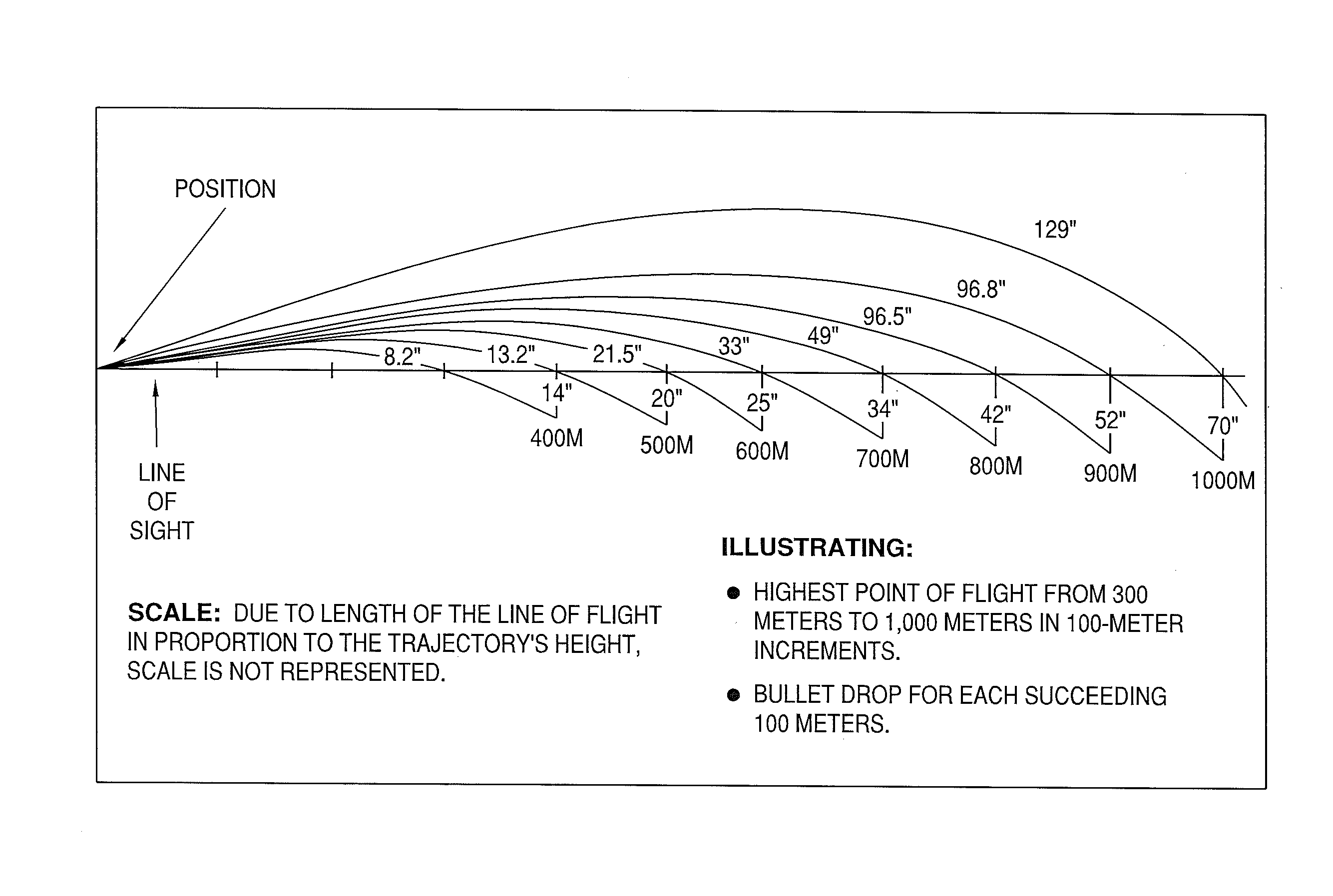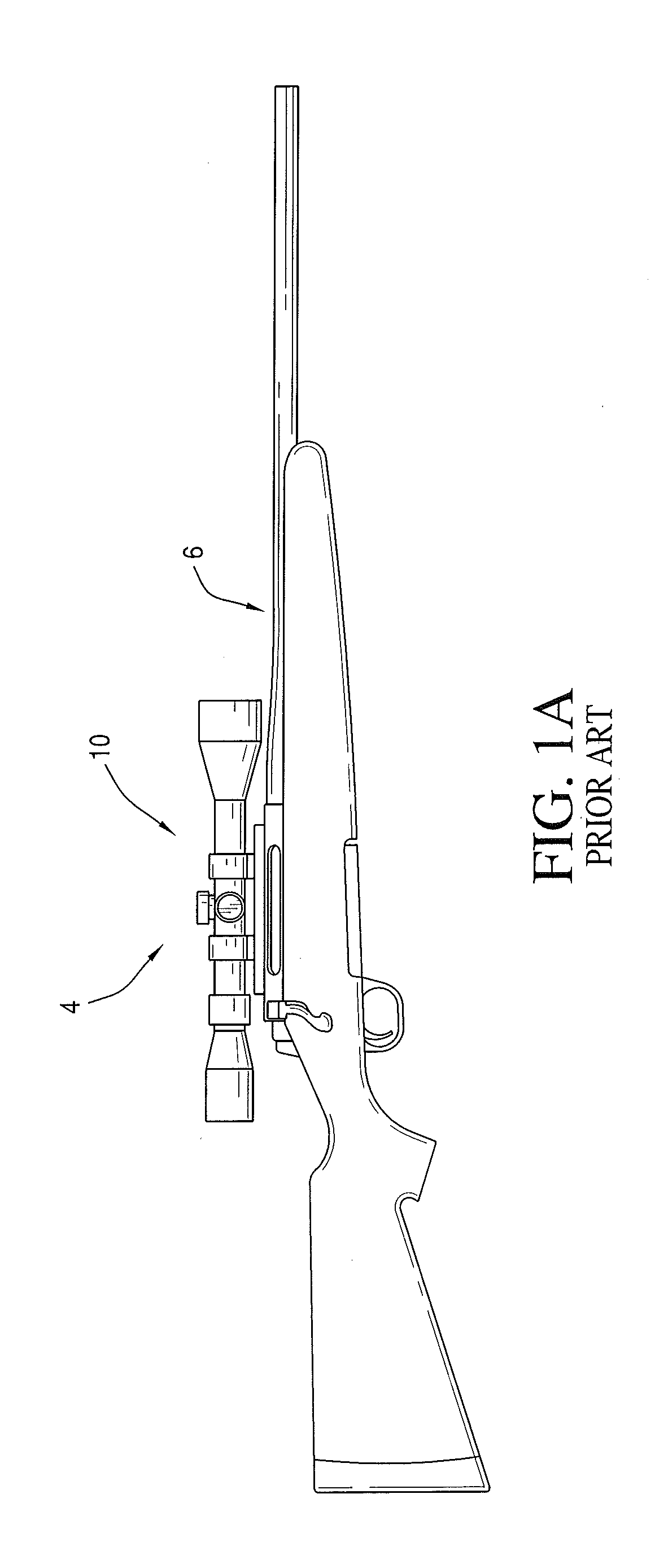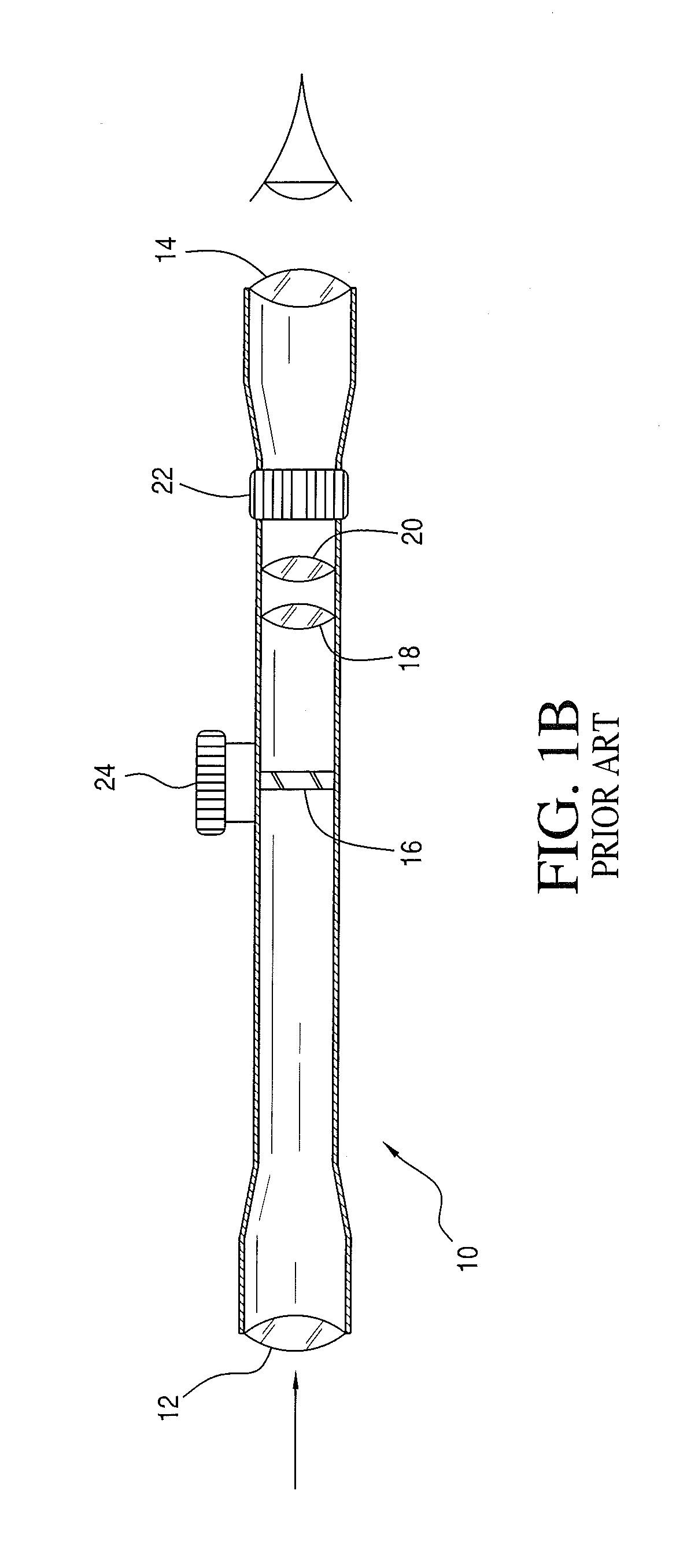Ballistic effect compensating reticle and aim compensation method
a compensation method and ballistic effect technology, applied in the direction of aiming means, weapons, sighting devices, etc., can solve the problems of essentially wrong long range reticles presently employed in the prior art system
- Summary
- Abstract
- Description
- Claims
- Application Information
AI Technical Summary
Benefits of technology
Problems solved by technology
Method used
Image
Examples
Embodiment Construction
[0071]Referring again to FIGS. 1A-1E. FIG. 1A's projectile weapon system 4 including a rifle 6 and a telescopic rifle sight or projectile weapon aiming system 10 are illustrated in the standard configuration where the rifle's barrel terminates distally in an open lumen or muzzle and rifle scope 10 is mounted upon rifle 6 in a configuration which allows the rifle system 4 to be adjusted such that a user or shooter sees a Point of Aim (“POA”) in substantial alignment with the rifle's Center of Impact (“COI”) when shooting or firing selected ammunition (not shown) at a selected target (not shown).
[0072]FIG. 1B schematically illustrates exemplary internal components for telescopic rifle sight or projectile weapon aiming system 10, with which the reticle and system of the present invention may also be used. As noted above, rifle scope 10 generally includes a distal objective lens 12 opposing a proximal ocular or eyepiece lens 14 at the ends of a rigid and substantially tubular body or ho...
PUM
 Login to View More
Login to View More Abstract
Description
Claims
Application Information
 Login to View More
Login to View More - R&D
- Intellectual Property
- Life Sciences
- Materials
- Tech Scout
- Unparalleled Data Quality
- Higher Quality Content
- 60% Fewer Hallucinations
Browse by: Latest US Patents, China's latest patents, Technical Efficacy Thesaurus, Application Domain, Technology Topic, Popular Technical Reports.
© 2025 PatSnap. All rights reserved.Legal|Privacy policy|Modern Slavery Act Transparency Statement|Sitemap|About US| Contact US: help@patsnap.com



